

Fibres & Fabrics
Fabric Switch: Sourcing Sustainable Stretch
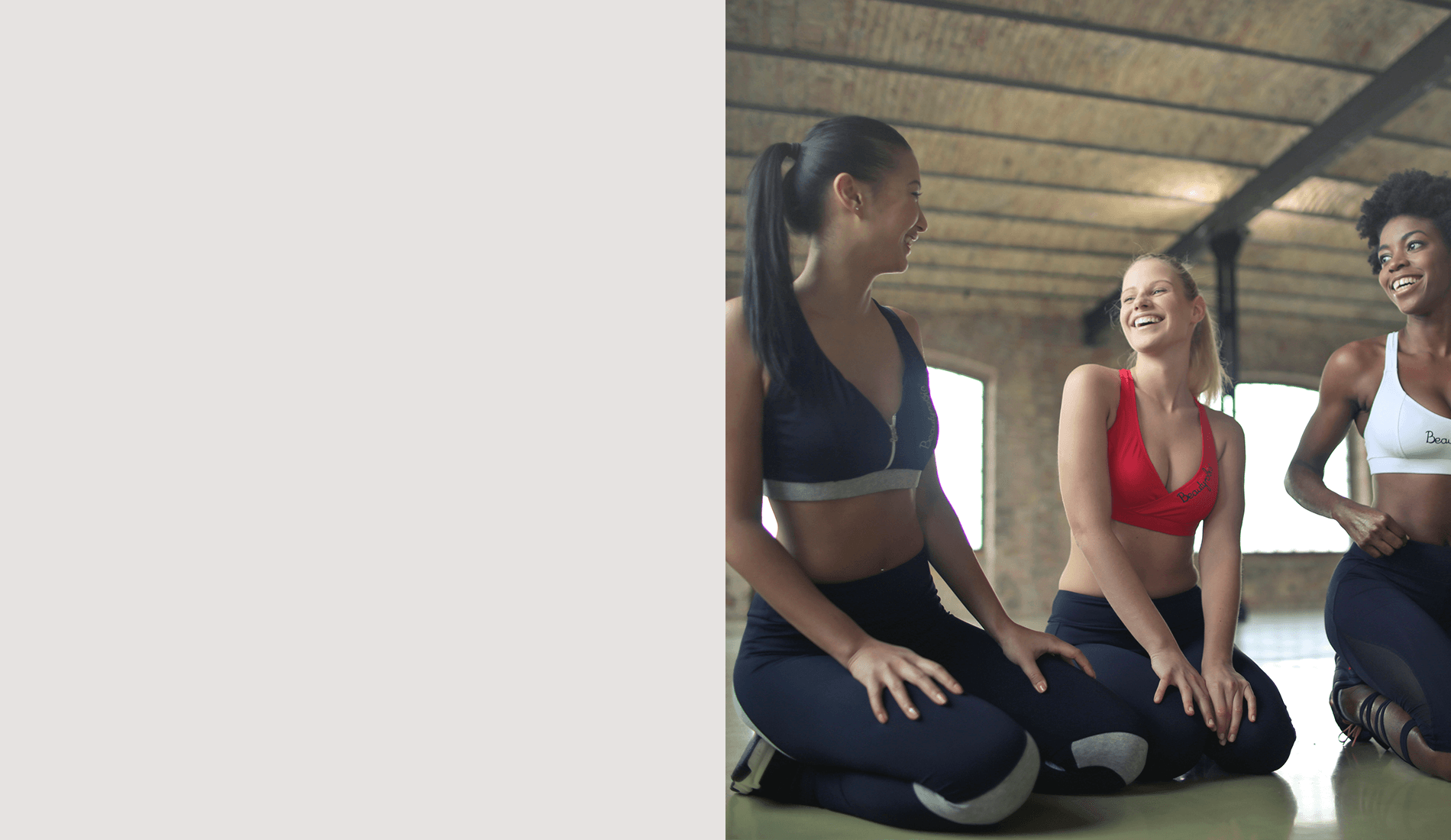
Intro
The rise of athleisurewear and the blurred line between activewear and fashion has seen an increased use of stretch fabrics across all brands from high street to luxury.
Elastane (also known as spandex or LYCRA®) remains the most commonly used stretch fibre - its stretchiness coming from long-chain synthetic fibres - often blended with polyester to create fabrics for activewear and swimwear.
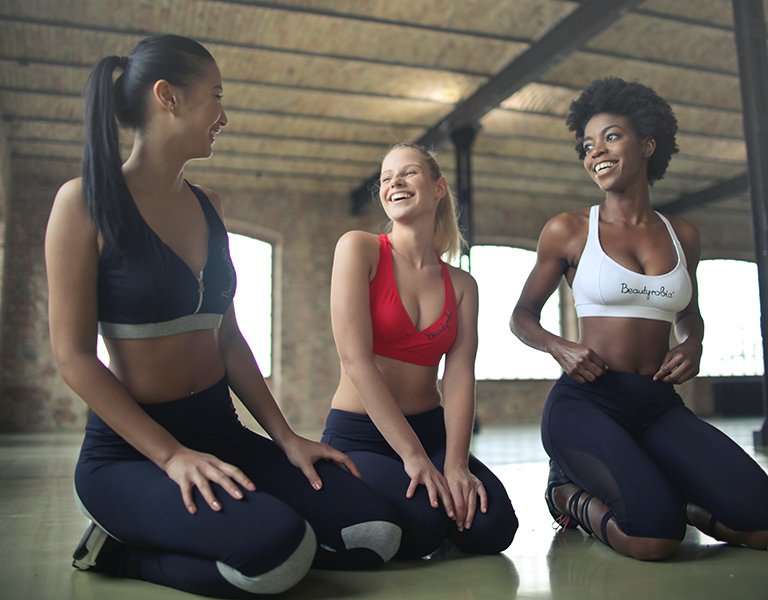
Intro
The rise of athleisurewear and the blurred line between activewear and fashion has seen an increased use of stretch fabrics across all brands from high street to luxury.
Elastane (also known as spandex or LYCRA®) remains the most commonly used stretch fibre - its stretchiness coming from long-chain synthetic fibres - often blended with polyester to create fabrics for activewear and swimwear.

Environmental Impact
The Higg Index rates elastane's environmental impact the same as polyester with much of its impact coming from the use of fossil fuels, contributing to global warming, and the chemicals used in its production.
As elastane is generally blended with other fibres its use in fabrics also makes them more difficult to recycle.
Avoiding elastane may be possible through fabric construction to give stretch without the need for its elasticity but innovative, more sustainable, alternatives are also on the market.
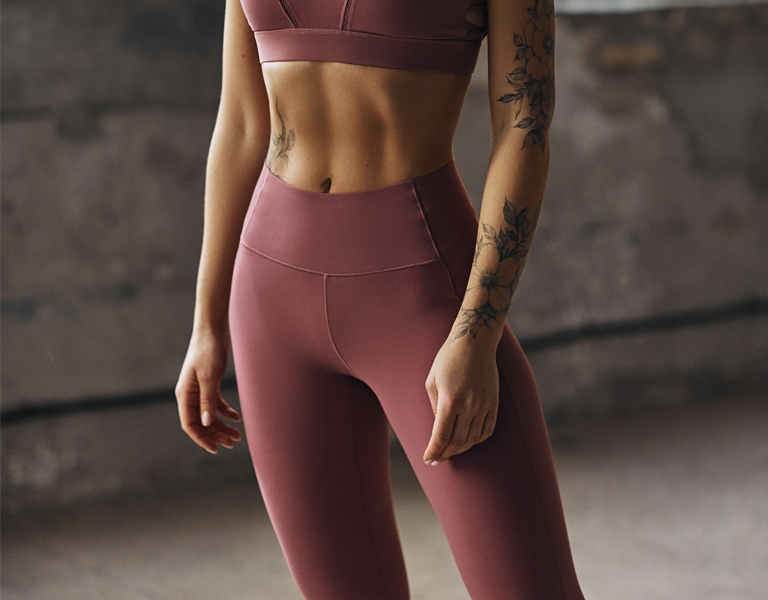
Environmental Impact
The Higg Index rates elastane's environmental impact the same as polyester with much of its impact coming from the use of fossil fuels, contributing to global warming, and the chemicals used in its production.
As elastane is generally blended with other fibres its use in fabrics also makes them more difficult to recycle.
Avoiding elastane may be possible through fabric construction to give stretch without the need for its elasticity but innovative, more sustainable, alternatives are also on the market.

Eco LYCRA®
More sustainable stretch is possible thanks to Invista's bio-based elastane.
Approximately 70%, by weight, of this bio-derived LYCRA® fibre comes from a renewable source made from dextrose derived from corn.
The popular LYCRA® T400® fibre now also comes with EcoMade technology.
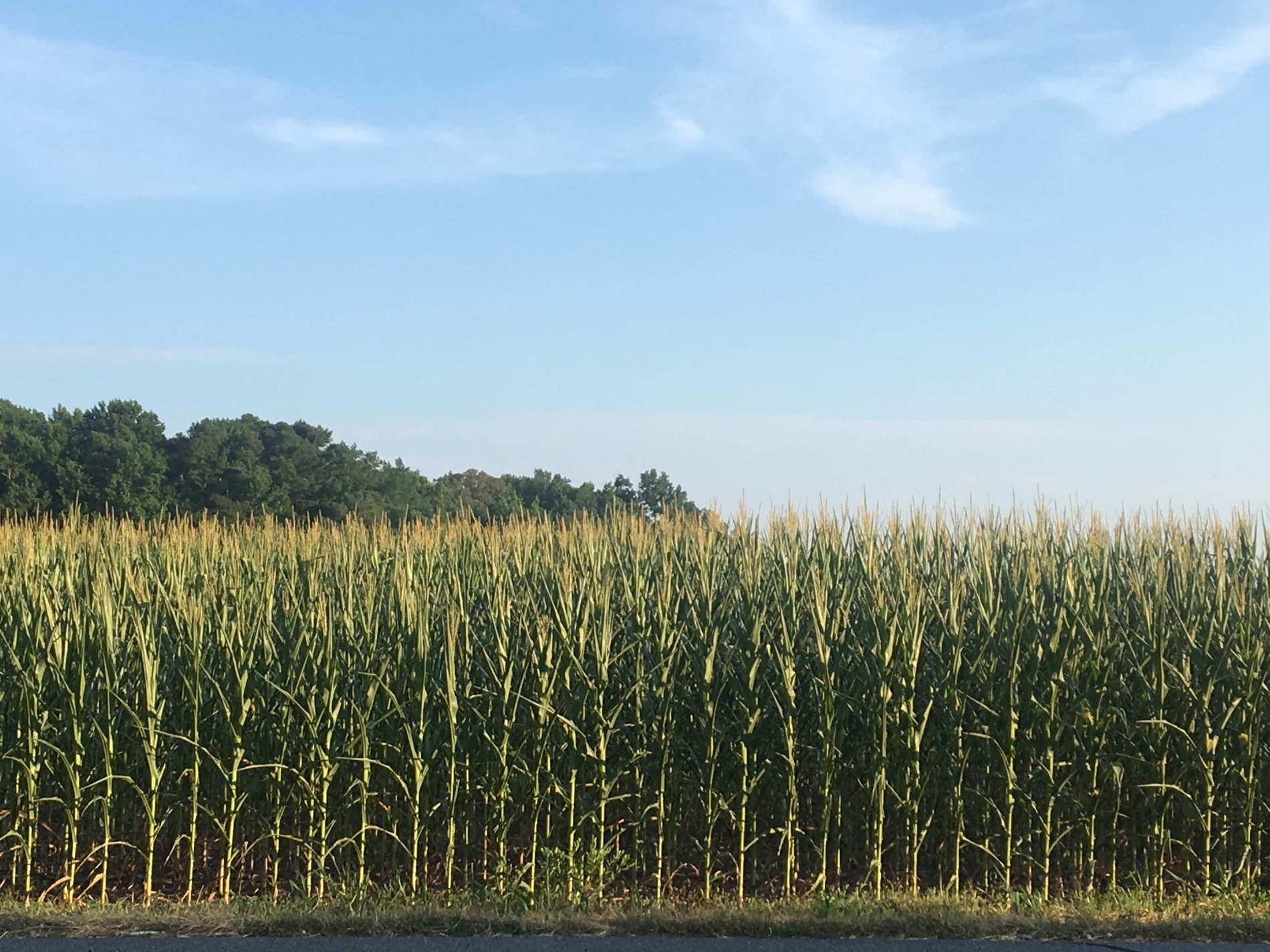
Eco LYCRA®
More sustainable stretch is possible thanks to Invista's bio-based elastane.
Approximately 70%, by weight, of this bio-derived LYCRA® fibre comes from a renewable source made from dextrose derived from corn.
The popular LYCRA® T400® fibre now also comes with EcoMade technology.

Stretch yarns
'Roica' is the most popular range from Japanese yarn producer, Asahei Kasei. It has two sustainable options available, which are used for various applications by brands such as Wolford (pictured) and Aubade for their hosiery and lingerie.
- Roica EcoSmart EF Elastane was the world's first stretch yarn made from recycled polyester; and
- Roica V550 is an eco friendly elastane suitable for producing underwear, lace, and narrow fabrics.
- Nilit EcoCare uses recycled fibres without sacrificing performance for a yarn suitable for intimate apparel, legwear and activewear.

Stretch yarns
'Roica' is the most popular range from Japanese yarn producer, Asahei Kasei. It has two sustainable options available, which are used for various applications by brands such as Wolford (pictured) and Aubade for their hosiery and lingerie.
- Roica EcoSmart EF Elastane was the world's first stretch yarn made from recycled polyester; and
- Roica V550 is an eco friendly elastane suitable for producing underwear, lace, and narrow fabrics.
- Nilit EcoCare uses recycled fibres without sacrificing performance for a yarn suitable for intimate apparel, legwear and activewear.
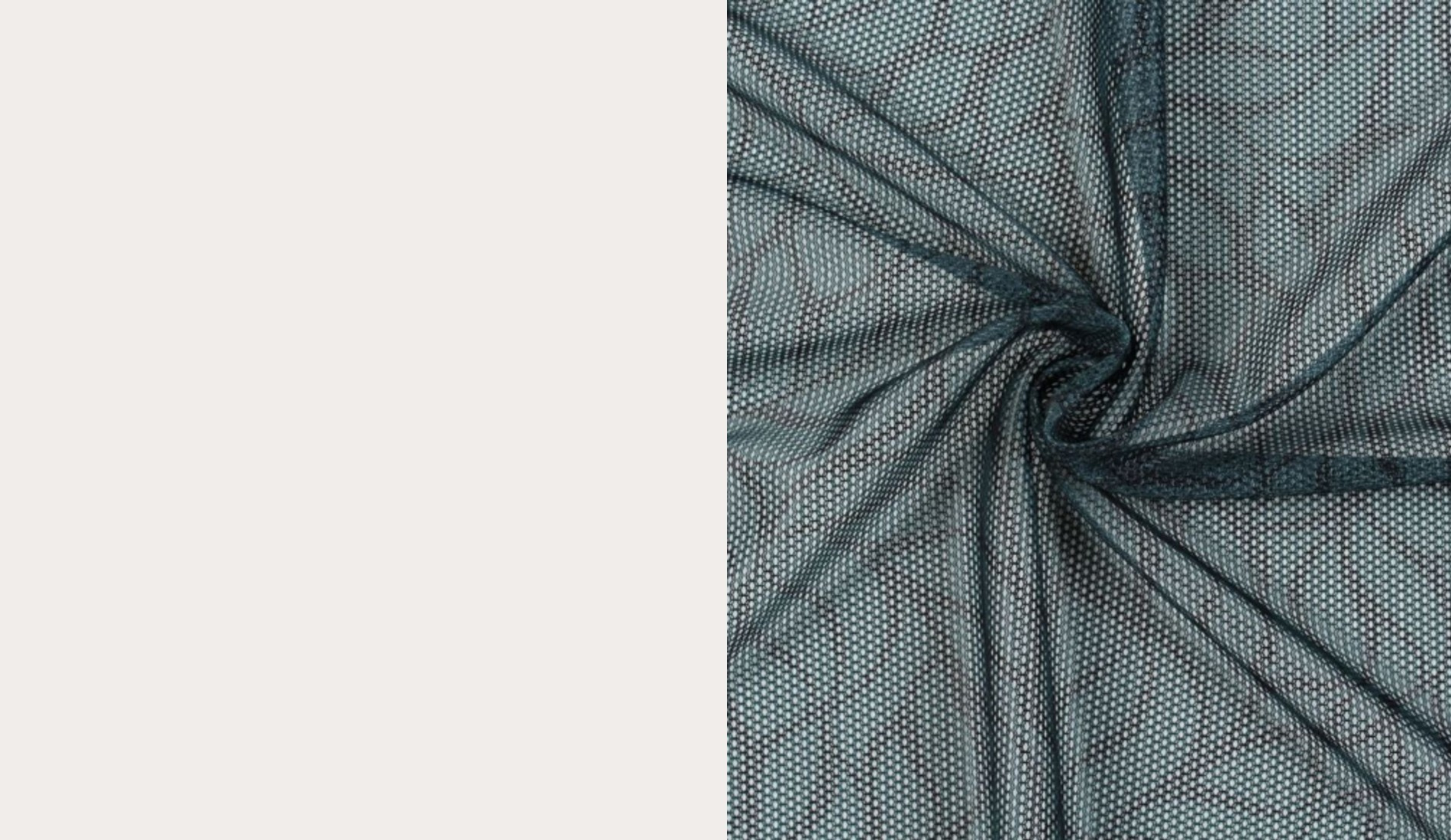
Eco stretch fabrics using Roica yarn
Each of these mills has a range of fabrics of different weights and qualities which contain blended Roica stretch with other sustainable fibres such as recycled polyester, recycled nylon and bio-synthetics.
- Piave Maitex's GreenLine
- Sofileta's Green Oblige range
- Maglificio Ripa New Earth collection
- Penn Textile Solutions' Dreamshape ecoinnovation
Image: Penn Dreamshape recycled polyester/Roica 140 g/m²
Eco stretch fabrics using Roica yarn
Each of these mills has a range of fabrics of different weights and qualities which contain blended Roica stretch with other sustainable fibres such as recycled polyester, recycled nylon and bio-synthetics.
- Piave Maitex's GreenLine
- Sofileta's Green Oblige range
- Maglificio Ripa New Earth collection
- Penn Textile Solutions' Dreamshape ecoinnovation
Image: Penn Dreamshape recycled polyester/Roica 140 g/m²

Sheiflex: new from waste
Yarn producer, Sheiflex, have developed the world's first recycled elastane yarn made from production waste.
This revolutionary yarn can be found in Spanflex's CF-Eco fabric which is made from a blend of waste elastane and recycled polyester from plastic bottles - both of which are GRS certified (an international, voluntary, full product standard that sets requirements for third-party certification of recycled content, chain of custody, social and environmental practices and chemical restrictions).

Sheiflex: new from waste
Yarn producer, Sheiflex, have developed the world's first recycled elastane yarn made from production waste.
This revolutionary yarn can be found in Spanflex's CF-Eco fabric which is made from a blend of waste elastane and recycled polyester from plastic bottles - both of which are GRS certified (an international, voluntary, full product standard that sets requirements for third-party certification of recycled content, chain of custody, social and environmental practices and chemical restrictions).

Singtex: energy efficient elastane
As well as being recyclable, S.Leisure by Singtex, claims to be 20% more energy efficient than conventional elastane.

Singtex: energy efficient elastane
As well as being recyclable, S.Leisure by Singtex, claims to be 20% more energy efficient than conventional elastane.

Sustainable Stretch Fabrics
Canadian mill Oratex's Eco-stretch collection includes circular knitted fabrics made from Lenzing Tencel, organic cotton and recycled polyester and nylon.
Sportwear Argentona have a UV and chlorine resistant stretch fabric made as part of their recycled polyester Ecorec range.
Image: Sportwear Argentona
Sustainable Stretch Fabrics
Canadian mill Oratex's Eco-stretch collection includes circular knitted fabrics made from Lenzing Tencel, organic cotton and recycled polyester and nylon.
Sportwear Argentona have a UV and chlorine resistant stretch fabric made as part of their recycled polyester Ecorec range.
Image: Sportwear Argentona
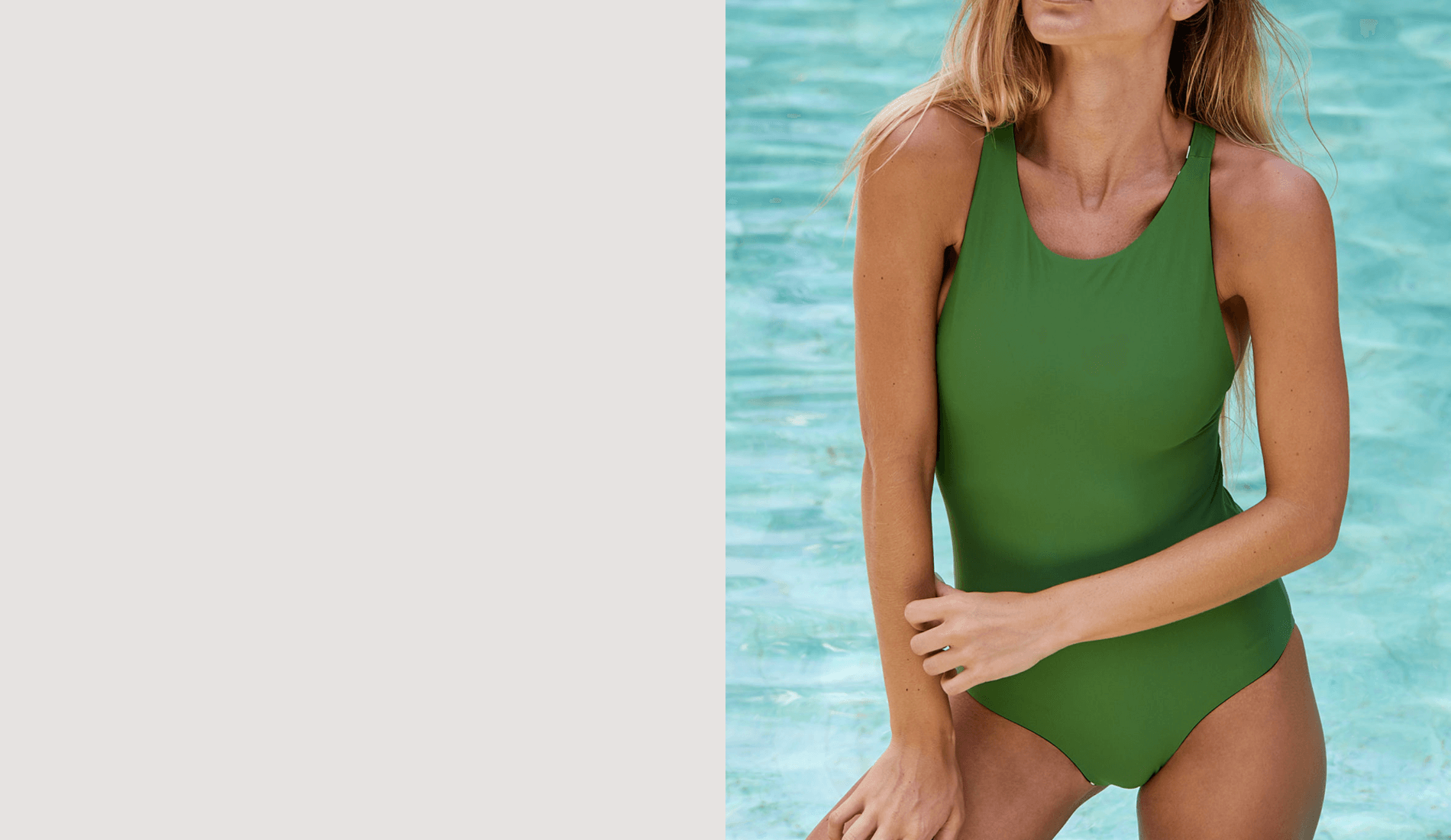
Sustainable stretch fabrics
Econyl Vita from Vivify is a blended stretch fabric made from recycled polyester from ocean plastic and elastane.
Used widely by swimwear brands such as Halla Halla (pictured) and Rubymoon.
Compared to traditional stretch fabrics, Econyl Vita boasts 70% less energy usage in its production.

Sustainable stretch fabrics
Econyl Vita from Vivify is a blended stretch fabric made from recycled polyester from ocean plastic and elastane.
Used widely by swimwear brands such as Halla Halla (pictured) and Rubymoon.
Compared to traditional stretch fabrics, Econyl Vita boasts 70% less energy usage in its production.
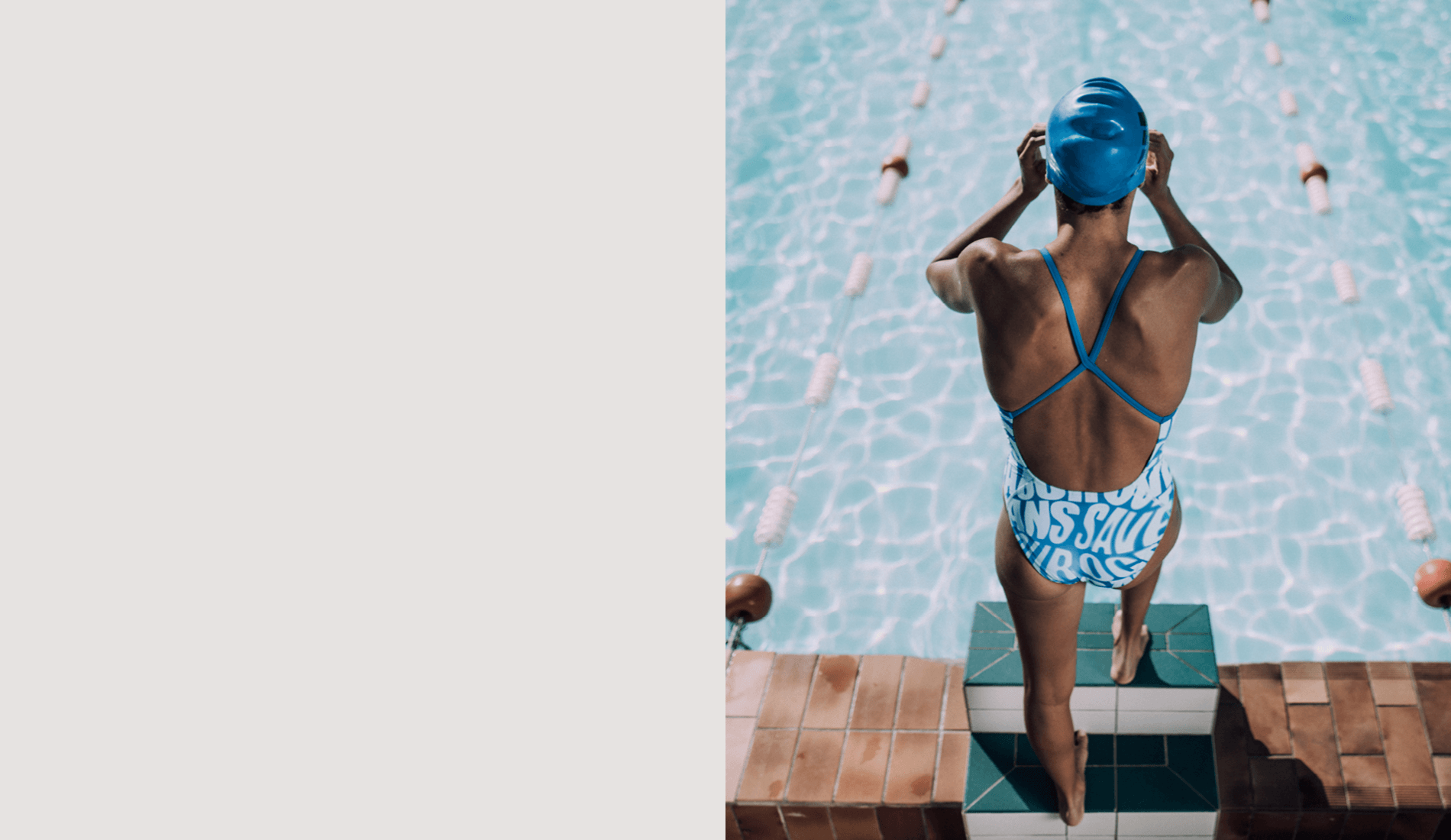
Sustainable stretch fabrics
Vita, Renew Prime, Revolutional Eco and Renew Cult from Italian mill Carvico are technical stretch fabrics made from blends including Econyl regenerated nylon.
These fabrics are particularly suitable for swimwear as demonstrated by a large number of gym and swimwear brands including Adidas' Parley for the Oceans collection (pictured).
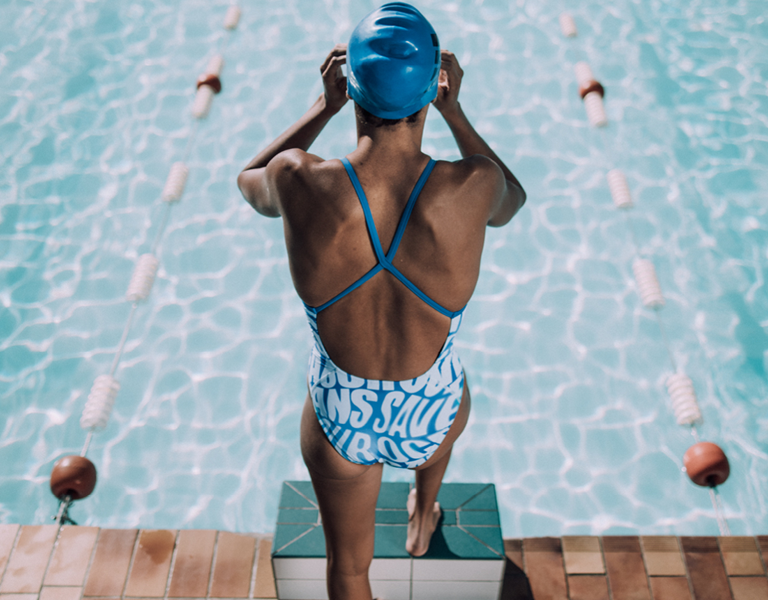
Sustainable stretch fabrics
Vita, Renew Prime, Revolutional Eco and Renew Cult from Italian mill Carvico are technical stretch fabrics made from blends including Econyl regenerated nylon.
These fabrics are particularly suitable for swimwear as demonstrated by a large number of gym and swimwear brands including Adidas' Parley for the Oceans collection (pictured).

Sustainable stretch embroidery and lace
- Modespitz in Germany is one of the first suppliers of GOTS-certified organic stretch embroidery and lace.
- As a fourth generation family business, they are building on the innovative design approach upon which they were founded in 1897.
- Italy's Tessitura Columbo Antonia, lingerie lace specialists, can supply eco lace using recycled yarns blended with Roica. These can also come naturally dyed.
Image: Modespitz
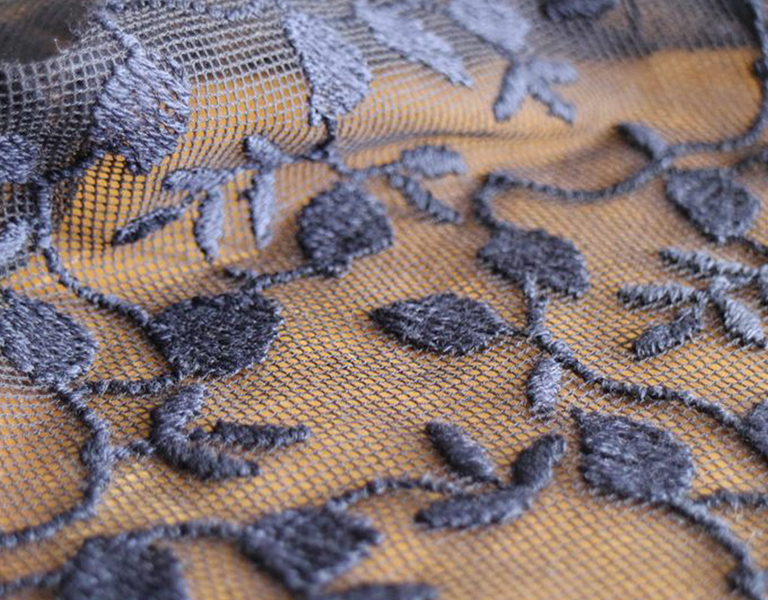
Sustainable stretch embroidery and lace
- Modespitz in Germany is one of the first suppliers of GOTS-certified organic stretch embroidery and lace.
- As a fourth generation family business, they are building on the innovative design approach upon which they were founded in 1897.
- Italy's Tessitura Columbo Antonia, lingerie lace specialists, can supply eco lace using recycled yarns blended with Roica. These can also come naturally dyed.
Image: Modespitz
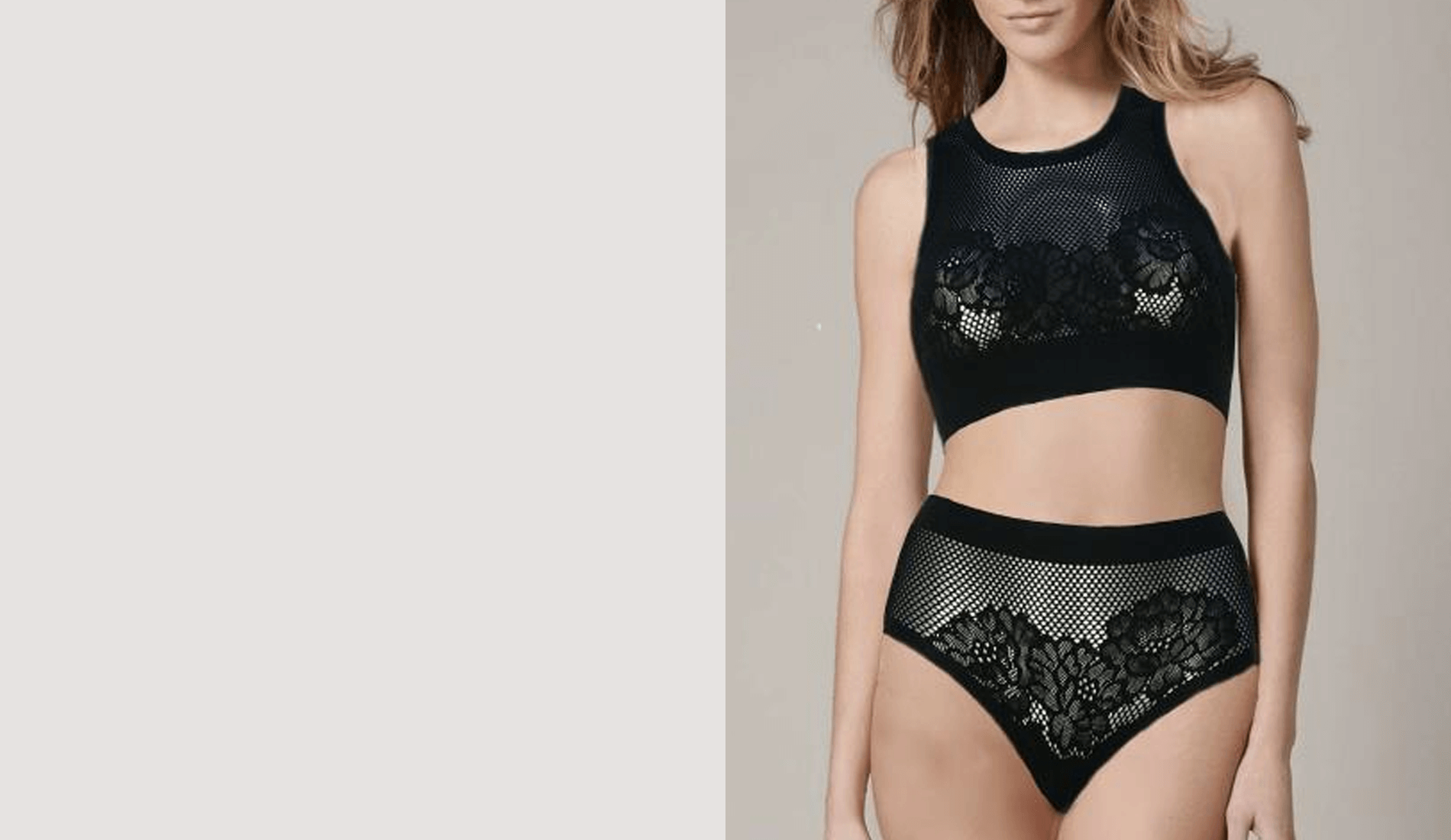
Sustainable stretch embroidery and lace
ILUNA, Europe's largest lace producer, has been working to innovate in sustainable stretch lace for some time.
Their Green Label line uses the Roica eco smart yarn - designed to recycle up to 60% of the waste created during production. They also use GRS certified recycled materials.
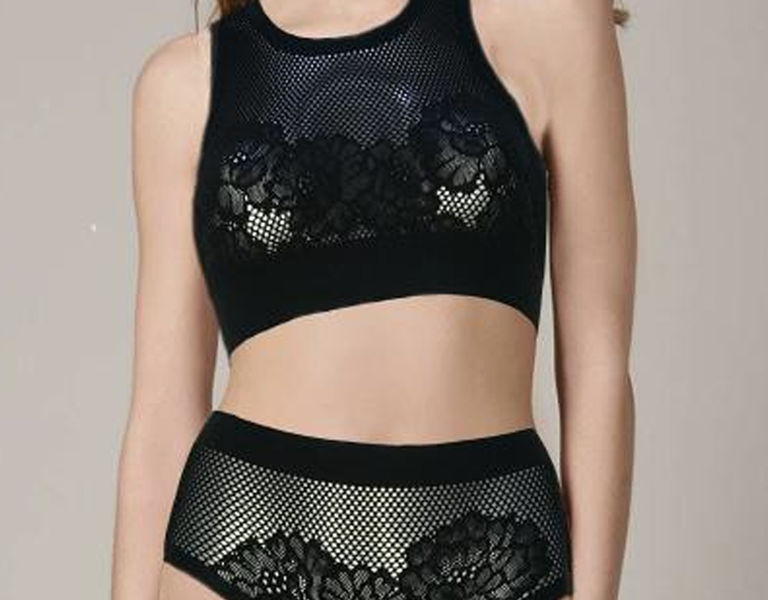
Sustainable stretch embroidery and lace
ILUNA, Europe's largest lace producer, has been working to innovate in sustainable stretch lace for some time.
Their Green Label line uses the Roica eco smart yarn - designed to recycle up to 60% of the waste created during production. They also use GRS certified recycled materials.

British wholesaler
For those based in the UK, Friedman’s is a wholesaler of recycled stretch nylon in a wide variety of colours.
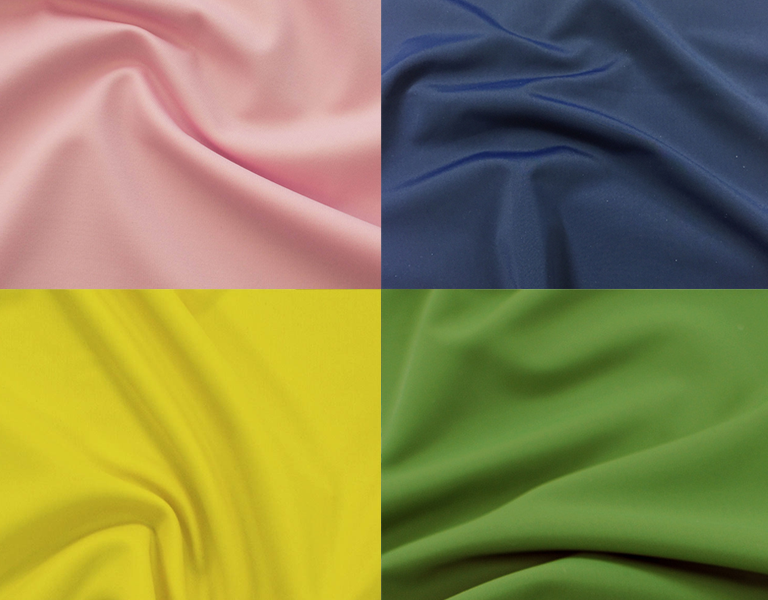
British wholesaler
For those based in the UK, Friedman’s is a wholesaler of recycled stretch nylon in a wide variety of colours.

Certifications and tools mentioned in this guide
- The Global Organic Textile Standard (GOTS) defines and establishes world-wide recognised requirements that ensure the organic status of textiles.
- The Global Recycled Standard from Textile Exchange certifies recycled content, chain of custody, social and environmental practices, and chemical restrictions.
- The Higg MSI from the Sustainable Apparel Coalition scores materials on their environmental impact from raw material, through manufacture and finishing to the final fabric.
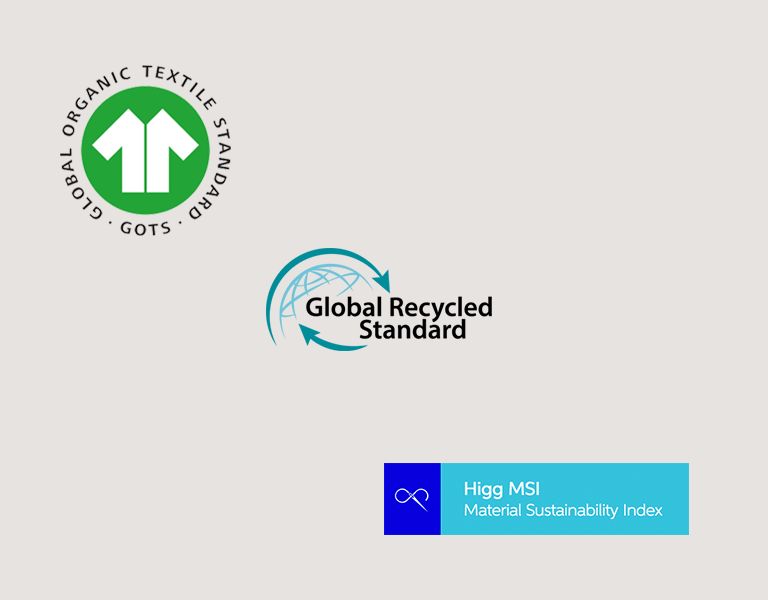
Certifications and tools mentioned in this guide
- The Global Organic Textile Standard (GOTS) defines and establishes world-wide recognised requirements that ensure the organic status of textiles.
- The Global Recycled Standard from Textile Exchange certifies recycled content, chain of custody, social and environmental practices, and chemical restrictions.
- The Higg MSI from the Sustainable Apparel Coalition scores materials on their environmental impact from raw material, through manufacture and finishing to the final fabric.
Related Reading
Sign up to connect with 50,000+ other sustainability-minded professionals and access over 300 pieces of actionable intelligence.
Common Objective is a global sourcing and information network that enables you to succeed in sustainable fashion business.
